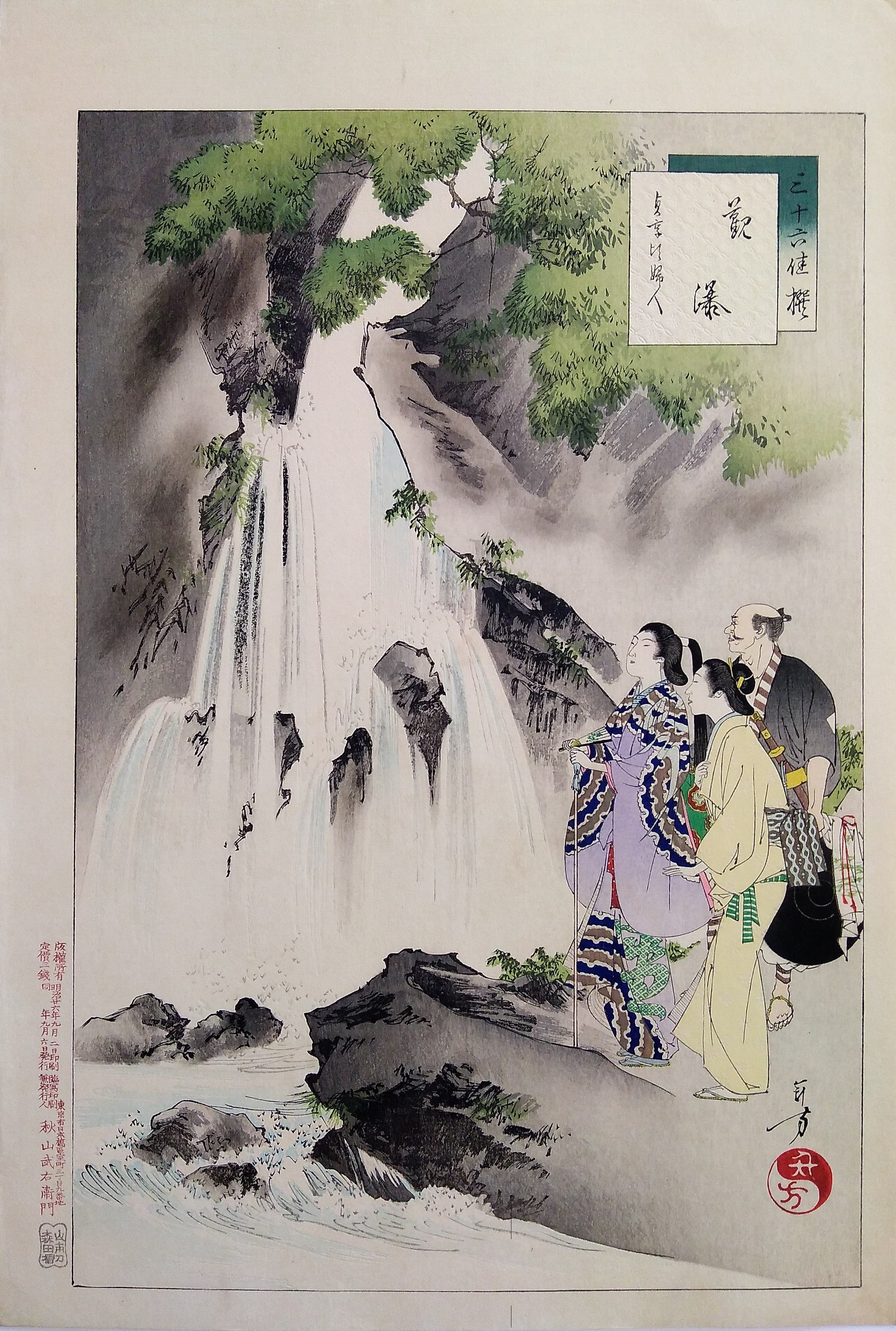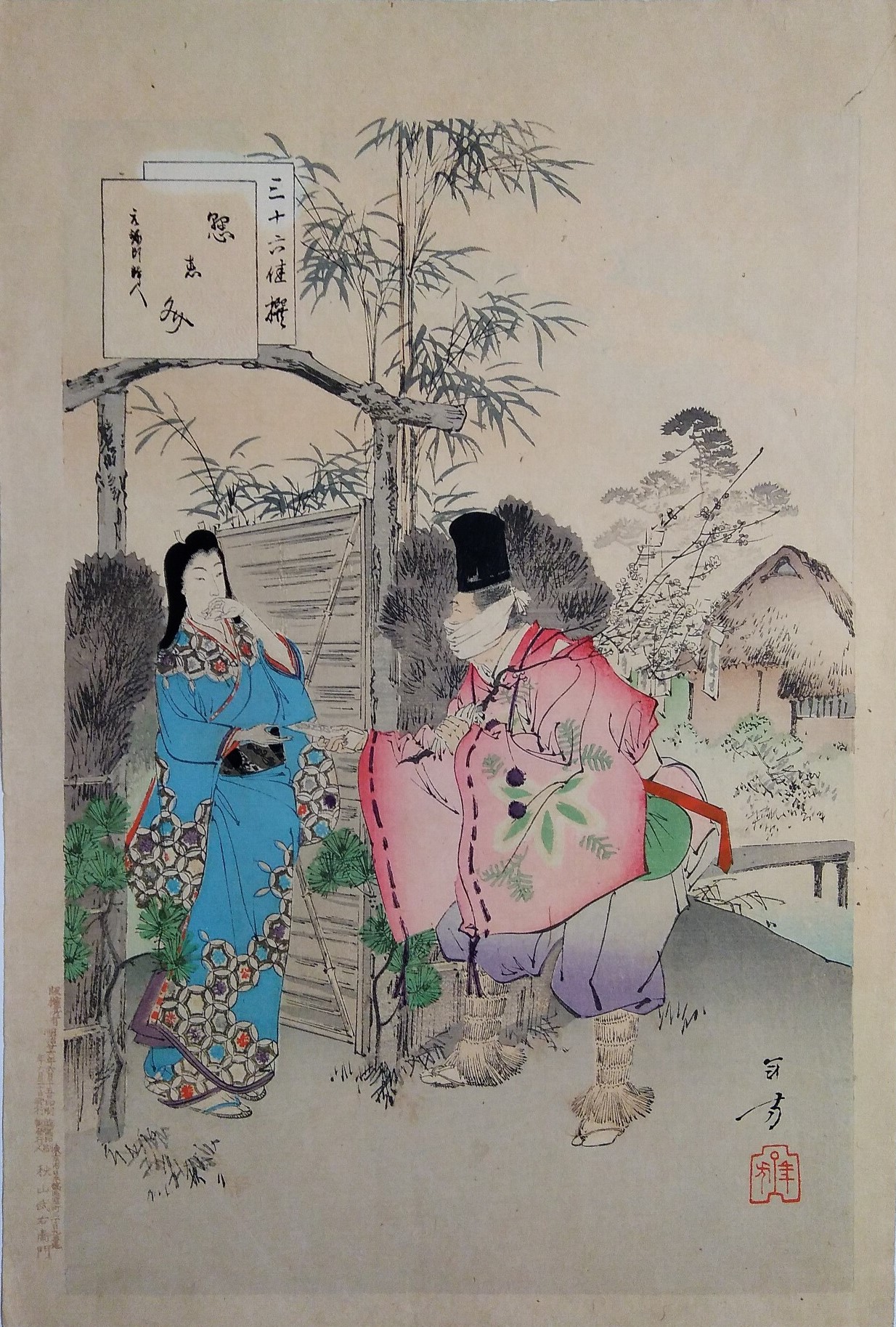Mizuno Toshikata
1866 ~ 1908Mizuno Toshikata, born in Edo as Kumejiro Nonaka, was a Japanese artist who served as a bridge between traditional ukiyo-e and modern Japanese printmaking. He began studying ukiyo-e at the age of fourteen under Tsukioka Yoshitoshi,
but had to interrupt his studies due to the bizarre behavior of his master, which his father could not accept. Despite this, he continued his education with various teachers, exploring different styles and subjects including Western-style painting
and rendering. He later returned to Yoshitoshi`s studio, where the master, impressed by his talent, designated him as his successor.
During his career, Toshikata worked as an illustrator for the "Yamato Shinbun" newspaper and produced lithographs for the literary magazine "Shinshosetsu", as well as sensō-e (war prints) during the Sino-Japanese War. He is best known for his works
such as bijinga (pictures of beautiful women), kuchi-e (frontispieces) used for literary magazines and novels, and his prints depicting the modernizing Japan of the Meiji era.
Among his students were key figures of the Shin Hanga movement such as Kaburagi Kiyokata, who taught Itō Shinsui and Kawase Hasui.
Toshikata died of overwork at the age of forty-two in 1908. His legacy continues to be studied for its artistic and historical value, reflecting his crucial role in the evolution of Japanese printing.
 Not for Sale
Not for Sale
This print by Mizuno Toshikata presents a traditional Japanese landscape, depicting a serene and picturesque scene of a 17th-century warrior and a noble woman, accompanied by her chaperone wearing a yellow yukata,
as they enjoy the view of a waterfall on a summer day.
Known for his style that marks the transition from ukiyo-e to the shin-hanga movement, Toshikata captures the essence of the natural landscape with a touch of delicacy and realism. The artwork portrays the tranquility and picturesque
beauty of the visitors admiring the cascading waters, effectively blending traditional and modern artistic elements.

